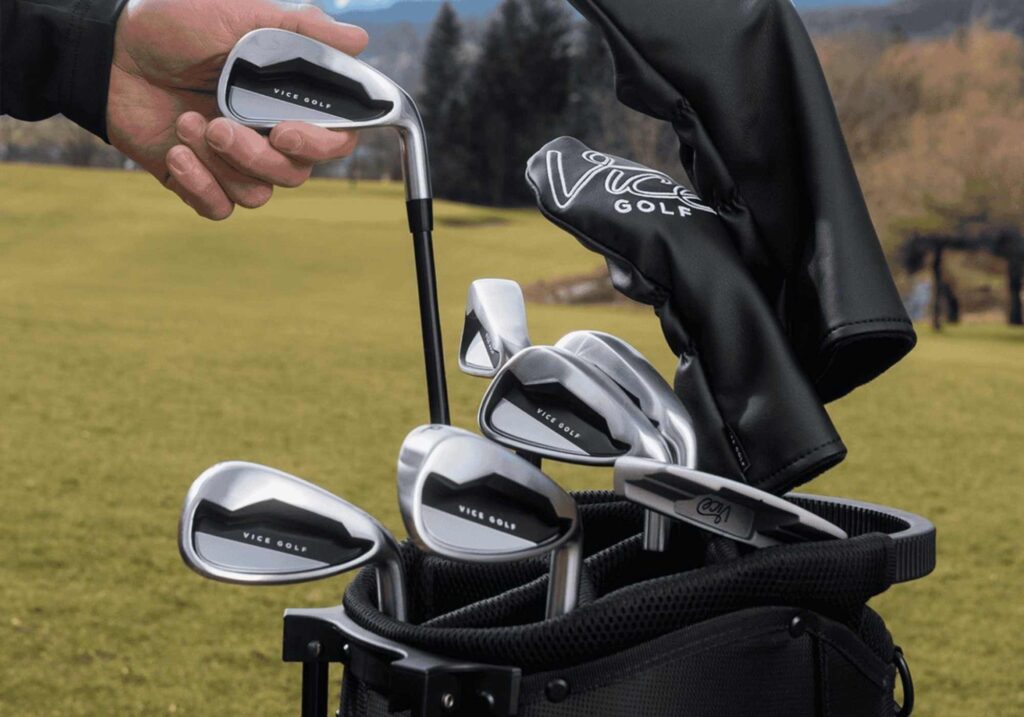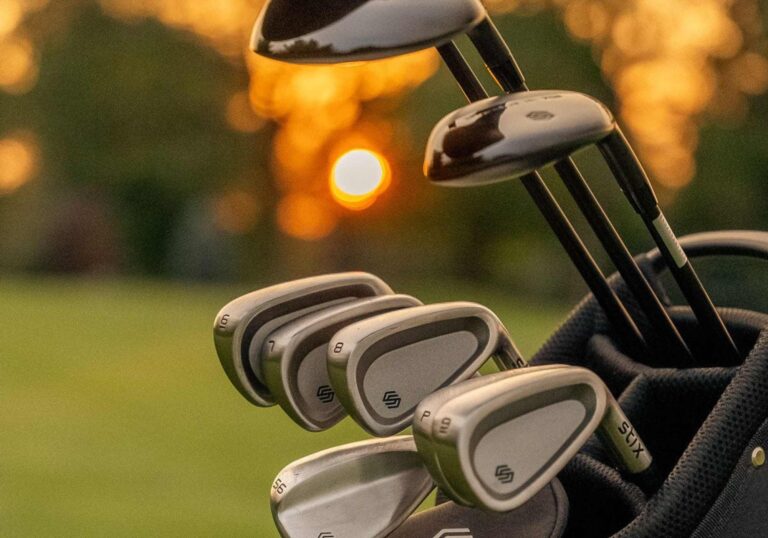If you’ve recently caught the golf bug, you’re probably standing in a sporting goods store (or scrolling online) wondering, What clubs do I actually need to start playing? The answer might surprise you: you don’t need a full bag of 14 clubs, nor do you need the latest and greatest technology. You just need a smart, simple setup that helps you learn the game and enjoy your time on the course.
This guide breaks down what clubs you really need, why each one matters and how to build a beginner-friendly setup without overcomplicating things.
Why you don’t need all 14 clubs
The USGA allows golfers to carry up to 14 clubs, but that doesn’t mean you have to fill every slot. In fact, as a beginner, having fewer clubs can actually make the game less confusing. Fewer decisions often lead to better focus and more confidence.
For new players, we typically recommend starting with 8 to 10 clubs. This gives you a mix of clubs to learn from while keeping the setup manageable and less expensive.
The core clubs you should have
Let’s break down the essential categories and which specific clubs are most useful for beginners.
1. Driver (or high-lofted fairway wood)
This is your tee shot club on longer holes. A driver gives you distance, but it can be tricky to hit well at first. Some beginners prefer starting with a 3-wood or a high-lofted driver (like 12 to 13 degrees) because they’re easier to control.
Start with:
- A 10.5 to 12-degree driver
- Or a 3-wood (15–16 degrees) as your main tee club
2. Fairway wood or hybrid
These clubs help you cover distance off the fairway or light rough. Hybrids are especially beginner-friendly because they’re easier to launch and more forgiving on off-center hits.
Start with:
- One fairway wood (3W or 5W)
- One hybrid (4H or 5H)
You don’t need multiple fairway woods or a full hybrid lineup to begin with. One of each is plenty.
3. Mid to short irons (6 through 9)
Irons are your go-to clubs for approach shots, shorter par 3s and anything from 100 to 170 yards depending on your swing. Many beginner sets include just a 6, 7, 8, and 9 iron, which is more than enough for learning distance control and ball striking.
Start with:
- 6-iron through 9-iron
- Or even just 7, 8, 9 to simplify
You don’t need long irons (3, 4, 5) as a beginner. They’re harder to hit and hybrids are a better alternative at this stage.
4. Wedge(s)
Wedges help with shots around the green, from bunkers, or inside 100 yards. A pitching wedge (PW) is usually included with iron sets, and it’s a great starting point. A sand wedge (SW) is also a smart addition for bunker play and short chips.
Start with:
- Pitching wedge (44–48 degrees)
- Sand wedge (54–56 degrees), optional but helpful
There’s no rush to get specialty wedges like gap or lob wedges. Add those later if needed.
5. Putter
This is arguably the most important club in your bag. You’ll use it on nearly every hole, and unlike full swing clubs, putting is more about feel and confidence than swing mechanics.
Start with:
- A basic mallet or blade-style putter that feels comfortable to you
You don’t need anything fancy. Go with something that helps you aim and feels balanced in your hands.
Example beginner club setup (9 clubs)
- Driver
- 5-wood
- 4-hybrid
- 6-iron
- 7-iron
- 8-iron
- 9-iron
- Pitching wedge
- Putter
This gives you enough variety to cover all types of shots without overwhelming you with too many choices.
Should I buy a full set or piece it together?

There are two good options for beginners:
1. Complete box sets
These include everything you need in one package, often including a bag and sometimes even balls and tees. They’re convenient, budget-friendly, and beginner-focused.
Popular beginner box sets include:
- Callaway Strata
- Tour Edge Bazooka
- Wilson Profile SGI
- Cobra Fly XL
- Vice Golf Starter Set
Pros:
- Great value
- Matched for easy learning
- All-in-one convenience
Cons:
- May outgrow quality faster
- Limited ability to customize
2. Build your own set gradually
Some golfers like to mix and match clubs to suit their preferences or budget. You can start with a few essentials (putter, wedge, hybrid, and iron or two) and build from there.
Pros:
- More control over brands and models
- Easier to upgrade piece by piece
Cons:
- Can be more expensive
- Takes more research
What about club fitting?
If you’re brand new to golf, a full professional club fitting might not be necessary right away. Many beginners benefit more from lessons and practice than from precision-fit clubs.
That said, if you’re tall, short, or have specific swing tendencies, a basic fitting to check your club length and lie angle can help avoid bad habits. Even getting measured at a store or demo day can offer some guidance.
Final thoughts
You don’t need every club under the sun to enjoy golf. You just need the right combination of tools to help you learn and have fun. Start simple, stick with forgiving clubs, and grow your set as your skills and preferences develop.
Remember, golf is hard enough without 14 decisions in every round. A lean setup keeps things focused and helps you build confidence where it counts.
Let’s hear from you
Are you building your first set? Did you start with a full bag or take the minimalist route? Share your experience and let others know what worked best for you. You might help someone else take their first step into the game.
